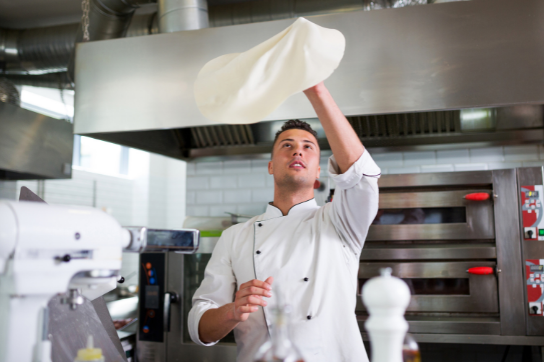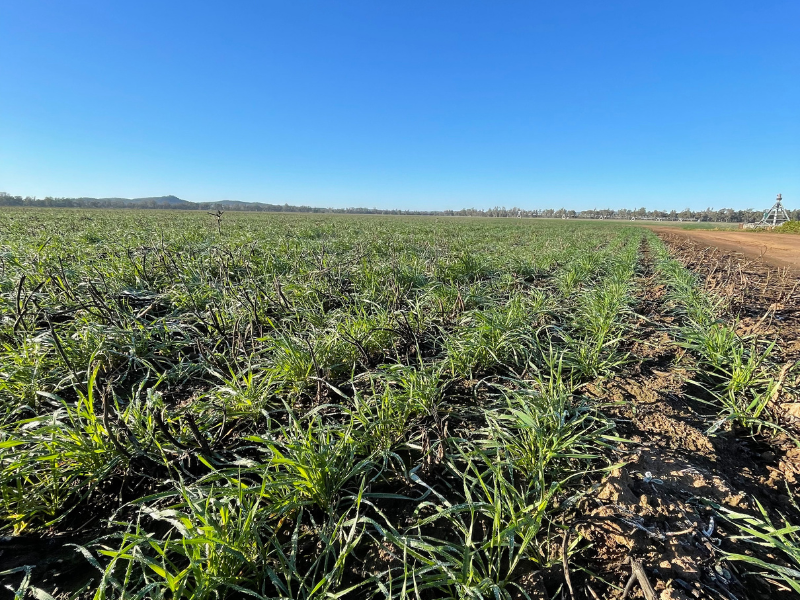
2021 Western NSW Regional Business Finalists
September 17, 2021
Why work for a family owned business like Ben Furney Flour Mills?
February 10, 2022Your top 5 pizza dough and crust troubleshooting questions, answered!

From time to time, even the best Pizzaiolo have issues with their pizza dough and crust formation. In this article we answer your top 5 pizza dough & crust troubleshooting questions.
In addition, we have put together a comprehensive guide that steps you through 50 different issues and outlined some solutions for you.
You can grab a full copy of that here.
But for now, let’s focus on our top 5 most asked pizza dough and crust troubleshooting questions and provide you with some potential remedies to help you right now in your pizzeria.
Our top 5 pizza dough and crust troubleshooting issues are
- Dough too elastic or springy (shrinks excessively after stretching)
- Black spots on top of dough ball
- Crust not brown enough all over
- Crust forms bubbles during baking
- Crust has doughy layer under the sauce (crust done on outside but raw inside)
Let’s break down the issues and potential solutions.
1. Dough too elastic or springy (shrinks excessively after stretching)
Flour’s protein level is too high
(1) Switch to a flour of 1 to 2 percent lower protein content, or (2) blend a lower protein flour with the current flour.
Dough under-mixed
Mix dough longer (try 10 to 20 percent more time).
Dough unrelaxed
1) Let dough relax for 30 minutes after mixing.
2) If feasible, flatten dough balls 2 to 3 minutes before final rolling or pressing.
Too cold
Warm the dough (balls) to 16 to 21 degrees C before using.
Protein too strong
If reducing the flour protein content is undesirable, (1) increase the oil or shortening level up to 4 to 5 percent of flour weight, or (2) use a dough relaxer —i.e: reducing agent – such as L-cysteine ( Speak to us if you feel that this is potentially an issue for you – link to contact us page)
Inadequate fermentation
Increase fermentation or rise.
Too Stiff
Increase amount of water in dough formula.
2. Black spots on top of dough ball
Although the spots look unsightly on a dough ball, in fact, they’re harmless and disappear during baking. So they might best be ignored.
Oxidation of bran particles in old dough
In future batches, lower dough pH by adding an acidic ingredient to the formula, such as 60-120gms of vinegar per 12.5kg of flour. NOTE: Increasing the acidity of dough can inhibit crust browning, so it may be necessary to add non-fat dry milk or whey to increase browning. Increased acidity also inhibits fermentation, so it may be necessary to increase yeast level or dough temperature.
3. Crust not brown enough all over
Inadequate amount of sugar in dough
Add lactose—i.e., whey or non-fat dry milk—to dough formula. Use 3 to 6 percent of flour weight. Sucrose, or table sugar, can also be used but it increases fermentation, which can produce undesirable side effects—so whey or non-fat dry milk is preferred.
Too much flour left on surface of dough
(1) Slap off all flour before laying dough onto pan, screen, or peel. (2) Keep pizza screens out of flour—i.e., don’t lay them on a flour-covered table.
Excessive fermentation
Reduce fermentation.
Oven temperature too low
Raise baking temperature and, possibly, reduce baking time.
4. Crust forms bubbles during baking
Most bubbling problems are caused by under-proofed dough. For top quality crust, the recommended way to reduce bubbling is use optimally proofed dough—neither under-risen nor over-risen.
However sometimes that’s not always possible.
In emergency cases, when dough is under-proofed, perforate the rolled dough using a dough docker. However, docking has the effect of creating a very flat crust. So unless you desire a flat crust, docking should only be used as a last resort.
Other methods of (possibly) reducing bubbles include (a) assembling the pizza with the soft bottom side of the dough facing up, and (b) using a slightly longer bake time and lower temperature.
Dough under-proofed (i.e., under-risen)
Use more-risen dough for making pizza.
Dough over-proofed (i.e., over-risen)
Use less-risen dough for making pizza.
High percentage of water in dough formula
Reduce the water portion in the dough formula by 2 to 4 percent of flour weight. This can help reduce the presence of super-large (pita-bread style) bubbles.
5. Crust has doughy layer under the sauce (crust done on outside but raw inside)
Many people confuse doughy layer under the sauce with gummy layer under the sauce. However, they’re distinctly different in appearance, cause, and remedy. Doughy layer is uncooked (i.e., ungelatinzed) dough. As a result, it has the appearance and texture of raw dough.
Basically, doughy layer is raw dough that hasn’t yet cooked. So the main cure is more heat or longer bake time.
Gummy layer—sometimes called gel layer—is cooked (coagulated) dough that is lacking air cells. During baking the cellular structure collapsed and the air dissipated, resulting in a dense, grayish, translucent mass with a gummy (gelatinous) texture. Because of its grayish color and gelatinous texture, some people crudely refer to gummy layer as “snot.” Gummy layer varies in thickness from very thin to almost the entire crust. It’s caused by excessive diastatic action in the dough. So the cure is to reduce diastatic activity.
Unlike with doughy layer, extended baking will not eliminate gummy layer.
Bake time too short; oven temperature too high
Lengthen bake time by 60 to 90 seconds and decrease oven temperature.
Pizza too cold going into the oven
(1) Use warmer (i.e., 15 to 21 degrees C) dough, sauce, and cheese, and/or (2) “double-bake” the crust by warming (pre-heating) it in the oven before applying sauce, cheese, and toppings. This is sometimes done with very thick pan-style pizzas with extensive topping.
Sauce too watery; tomato product has excessive syneresis (water separation)
(1) Add less water to the sauce, and/or
(2) use a thicker tomato product, and/or
(3) use a higher quality tomato product.
Sauce applied too soon
Apply the sauce just before pizza is baked. (However, a thick, high-quality sauce can be applied 2 to 3 hours before baking without causing a doughy layer.)
This is just our top 5 issues, do you think we missed any of the important ones?
Download our comprehensive Pizza Dough and Crust Troubleshooting Guide here where we outline 50 different potential problems and outline some potential solutions for you.




